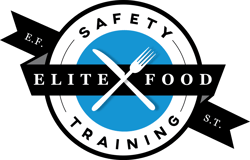Learn about the crucial role of corrective action plans in maximizing food safety and ensuring compliance with regulations.
The Significance of Corrective Action Plans
Corrective action plans play a crucial role in ensuring food safety and compliance with regulations. These plans are developed to address any opportunities for improvement identified during food safety audits. By implementing effective corrective actions, establishments can prevent potential risks, improve product safety, quality, and consistency, and ultimately protect the health and well-being of their customers.
Through the use of corrective action plans, establishments can identify and address root causes of food safety issues. This proactive approach helps to prevent the occurrence of similar issues in the future, reducing the likelihood of foodborne illnesses and other safety concerns. Corrective action plans also promote continuous improvement by encouraging establishments to regularly evaluate and enhance their food safety practices.
Furthermore, corrective action plans demonstrate a commitment to maintaining high standards of food safety. By actively addressing opportunities for improvement, establishments show their dedication to providing a safe and healthy environment for both their employees and customers. This commitment can help build trust and confidence among customers, leading to increased customer loyalty and a positive brand reputation.
Key Components of a Corrective Action Plan
Effective corrective action plans should include key components that ensure comprehensive and systematic improvements in food safety practices. These components may include:
- Clearly defined objectives: A corrective action plan should have specific goals and objectives that address the identified issues. This helps provide a clear direction for improvement efforts.
- Action steps: The plan should outline the specific actions that need to be taken to address the identified issues. These actions may include training staff, implementing new procedures, or improving existing processes.
- Timeline: Establishments should establish a timeline for implementing the corrective actions. This helps ensure that improvements are made in a timely manner.
- Responsibility assignment: Each action step should be assigned to a responsible individual or team who will oversee its implementation. This helps ensure accountability and effective execution of the corrective actions.
- Monitoring and evaluation: The plan should include mechanisms for monitoring and evaluating the effectiveness of the corrective actions. This allows establishments to assess the progress made and make any necessary adjustments to ensure continuous improvement.
By including these key components, establishments can develop comprehensive and effective corrective action plans that address food safety issues and drive continuous improvement.
Implementing Corrective Actions
Implementing corrective actions requires a systematic approach to ensure that the identified issues are effectively addressed. The following steps can guide establishments in the implementation process:
1. Prioritize actions: Establishments should prioritize the corrective actions based on their potential impact on food safety and the likelihood of occurrence. This allows them to focus their resources on the most critical issues.
2. Develop action plans: For each identified issue, establishments should develop detailed action plans that outline the specific steps to be taken, the responsible parties, and the timeline for completion.
3. Communicate and train: Effective communication is essential to ensure that all staff members are aware of the corrective actions and their responsibilities. Training sessions may be conducted to educate staff on the new procedures or practices.
4. Monitor progress: Establishments should regularly monitor the progress of the corrective actions to ensure that they are being implemented as planned. This may involve conducting follow-up audits or inspections.
5. Evaluate effectiveness: Once the corrective actions have been implemented, establishments should evaluate their effectiveness in addressing the identified issues. This may involve conducting internal audits or seeking feedback from staff and customers.
By following these steps, establishments can effectively implement corrective actions and drive improvements in food safety practices.
Monitoring and Evaluation
Monitoring and evaluation are essential components of an effective corrective action plan. These processes help establishments assess the progress made in addressing food safety issues and identify any areas for further improvement. Here are some key aspects of monitoring and evaluation:
- Regular inspections: Establishments should conduct regular inspections to ensure that the corrective actions are being implemented correctly and consistently.
- Data analysis: Data collected during inspections, audits, and other monitoring activities should be analyzed to identify trends, patterns, and areas of concern. This analysis can help establishments make informed decisions about additional corrective actions or adjustments to existing procedures.
- Feedback mechanisms: Establishments should establish feedback mechanisms to gather input from staff and customers regarding the effectiveness of the corrective actions. This feedback can provide valuable insights and help identify any areas that require further attention.
By actively monitoring and evaluating the implementation of corrective actions, establishments can ensure that food safety standards are being met and continuously improved.
Benefits of Effective Corrective Action Plans
Implementing effective corrective action plans can bring numerous benefits to establishments. Some of the key benefits include:
- Improved food safety: Corrective actions help address identified issues and prevent potential risks, thereby enhancing the overall safety of the food products served.
- Enhanced quality and consistency: By addressing root causes of opportunities for improvement, establishments can improve the quality and consistency of their food products, leading to greater customer satisfaction.
- Increased operational efficiency: Corrective actions often involve streamlining processes and improving procedures, which can result in increased operational efficiency and cost savings.
- Boosted customer confidence and brand loyalty: When customers see that an establishment takes food safety seriously and actively works to address any issues, they are more likely to trust the brand and become loyal patrons.
By reaping these benefits, establishments can create a safer and healthier environment for both their staff and customers, while also strengthening their reputation in the industry.


.png)
-2.png)
-2.png)
.jpg)
